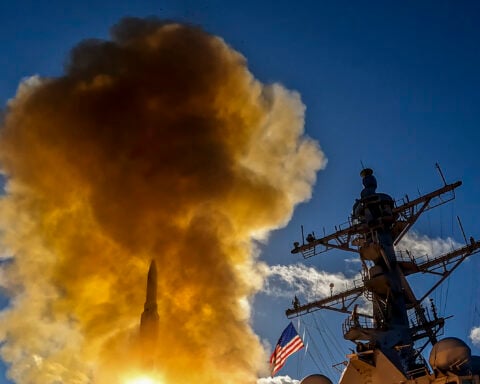The following is the June 14, 2024, Congressional Research Service report, Hamas: Background, Current Status, and U.S. Policy.
From the report
Hamas (or the Islamic Resistance Movement) is a Palestinian Sunni Islamist military and sociopolitical movement, and a U.S.-designated foreign terrorist organization (FTO). Hamas’s primary base of action and support is in the Gaza Strip, which it has controlled since 2007. It also operates in the West Bank and Lebanon, and some Hamas leaders and personnel live and/or work in various Arab countries and Turkey. Hamas reportedly receives material assistance and training from Iran and some of its allies, including the Lebanese Shia group Hezbollah (another FTO). From its inception, Hamas has overseen a social welfare network that appears to have aided its popularity among Palestinians while serving as a conduit for some funding for Hamas military operations.
On October 7, 2023, Hamas led a surprise assault against Israel that killed some 1,200 Israelis and foreign nationals (including 35 Americans) and took around 250 persons hostage (including some Americans)—more than 100 of whom were released in November. The attack’s scope and lethality were unprecedented for Hamas. The ensuing conflict, which has reportedly killed more than 37,000 Palestinians in Gaza, has reshaped Middle Eastern dynamics, with implications for U.S. policy and Congress. A Hamas spokesperson has said the group is committed to repeating October 7-style attacks against Israel.
Origins, Ideology, and Leadership
An outgrowth of the Palestinian branch of the Muslim Brotherhood, Hamas emerged in 1987 in Gaza during the first Palestinian intifada (uprising). After the Palestine Liberation Organization (PLO) entered into a peace process with Israel that created the Palestinian Authority (PA) to exercise limited rule in the West Bank and Gaza, Hamas established itself as an alternative to the secular Fatah movement, which leads the PLO, by violently attacking Israeli civilian and military targets. Hamas’s ideology combines Palestinian nationalism with Islamic fundamentalism. Hamas’s 1988 charter committed the group to the destruction of Israel and the establishment of an Islamic state in all of historic Palestine (comprising present-day Israel, the West Bank and Gaza), and included anti-Semitic rhetoric. Observers differ on the extent of Hamas’s pragmatism. In 2017, the group publicly released a statement that Hamas’s conflict is with the “Zionist project” rather than with Jews in general. It also expressed willingness to accept a Palestinian state in the West Bank and Gaza if it results from “national consensus,” but said Hamas would not recognize Israel’s legitimacy.
Hamas’s formal leadership structure consists of a 15-member politburo as the group’s primary decision-making entity and a Shura Council that elects the politburo—with similar structures for the West Bank, Gaza, prisoners in Israel, and the diaspora. Ismail Haniyeh, a former PA prime minister based in Qatar, is chairman of the politburo. Yahya Sinwar, Hamas’s leader in Gaza since 2017, and Muhammad Deif, Hamas’s military leader, reportedly masterminded the October 7 assault, and apparently are priority targets for Israel (which has assassinated several Hamas leaders over years of conflict). Sinwar, who appears to be Hamas’s key wartime decision-maker, returned to Gaza from Israel in 2011 as part of a hostage-prisoner swap, after 22 years in prison for the abduction and murder of two Israeli soldiers and the killing of four Palestinians.
Download the document here.





